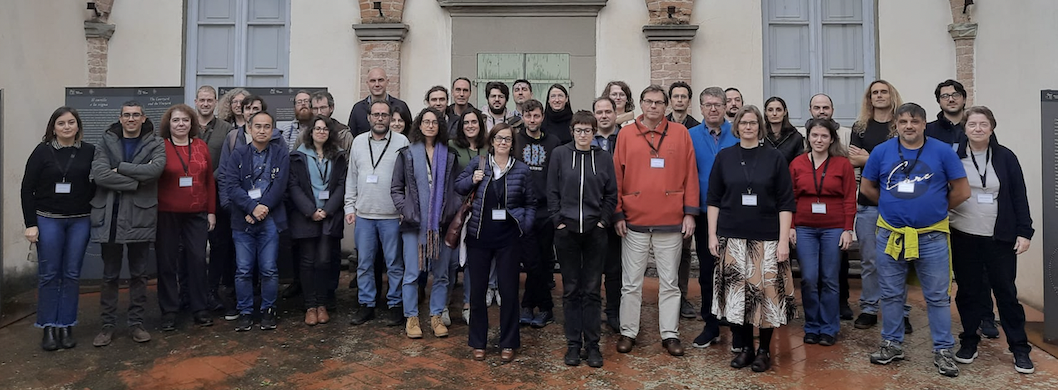Stars are primarily formed in clustered environments in giant molecular clouds. Stars are also primarily found in binary or higher order multiple systems. Therefore, there is a time during the formation of star clusters when both stellar dynamics and hydrodynamics are needed to describe the dominant populations, and we probably also need to care about radiation, chemistry, dust physics, and...
While some young stars are clustered, many other young stars are observed as dispersed,
non-gravitationally bound groups, or in complete isolation. Using N-body simulations,
we study dispersal of young open star clusters of a wide range of initial masses.
We find that observational data are consistent with the assumption that all stars form
in initially embedded star clusters, which loose...
In the last ~10 yrs, several young stellar clusters have been associated to diffuse gamma-ray emission in the energy range from ~1 GeV up to ~100 TeV. In particular in the region close to the association Cygnus OB2 photons up to the incredible energy od 1.4 PeV have been detected by LHAASO. The orginin of the non-thermal particles responsible for the gamma-ray emission is not completely clear....
The initial conditions of star-forming regions will dictate if they will disperse into the field or survive as bound open clusters. Methods have been developed to characterise star-forming regions and infer the initial conditions of them (i.e. initial density, degree of substructure and virial state). These methods have been used to quantify the spatial clustering of stars within star-forming...
In our quest to gain a deeper understanding of our Solar Neighborhood, Gaia has proven instrumental in elucidating the 3D spatial structure of the local interstellar medium (ISM) and the distribution of young stellar clusters. However, to unravel the origin and evolution of nearby young structures, a crucial dimension is the measurement of their 3D space motions. These motions allow us to...
We perform simulations of cluster formation in regions taken from galaxy scale simulations, including photoionization and supernovae feedback. We simulate regions with different densities, and from different galactic environments. In all our simulations, clusters undergo mergers and splits during their formation. More massive clusters form in regions of spiral arms with stronger converging...
Star formation is a fundamental process that impacts many fields of astrophysics, from the formation and evolution of planets to galaxies. The interaction between the natal cloud and the newborn stars is one of the least understood star formation processes and has an important impact on the final star-formation efficiency and cluster dynamics. I will present an innovative methodology to...
Young clusters are a formidable tool to study star formation, stellar evolution, binary stars, as well as the formation and evolution of clusters themselves. The availability of data from Gaia, coupled with additional ground-based data and clustering analysis methods, allow us for the first time to discover and study a wide range of clusters with unprecedented details. In the region around...
The EWOCS (Extended Westerlund 1 and 2 Open Clusters Survey) project has the objective of studying star and planet formation, and early stellar evolution, in super massive star clusters (SSCs). With a mass in excess of 10^4 solar masses, the very few SSCs known in the Milky Way represent the most accessible examples of starburst regions, which are very rare in our Galaxy today, but common in...
The spiral shape of the vertical phase diagram found by Antoja and collaborators is one of the most conspicuous of the many results provided by Gaia. This structure is observed over a wide range of galactocentric radii for disk stars with ages greater than 1 Ga. Alfaro et al. chose a sample of star clusters with ages less than 30 Ma finding a linear relationship between Vz and Z. We have...

